I’ve always loved the Sonoran Desert landscape as well as the attendant art. I jumped, therefore, at the opportunity to attend the 2023 APLD (Association of Professional Landscape Designers) in Tucson this past November. Before the conference began, my husband and I spent a day revisiting favorite spots. As we were walking through an alley-like street, I noticed an iron gate that “shouted” Tucson and desert.

Iron gate decorated with iron sculptures of a saguaro and an iguana
The most fascinating place we visited was the Arizona-Sonora Desert Museum which attempts to recreate the various habitats of the Sonoran Desert, including a Desert Woodland. To make that particular area workable for native oaks, for instance, it has been necessary to acidify the soil by injecting acid into the irrigation water. One of the plants that attracted my attention, Bursera microphylla, was a Taxus look-alike that is both tree or shrub depending upon its growth. Unlike Taxus, however, it is not evergreen. In fact, when it lacks water, it drops its leaves but then refoliates with the advent of winter or summer storms. What a great example of a plant adapting to its environment.
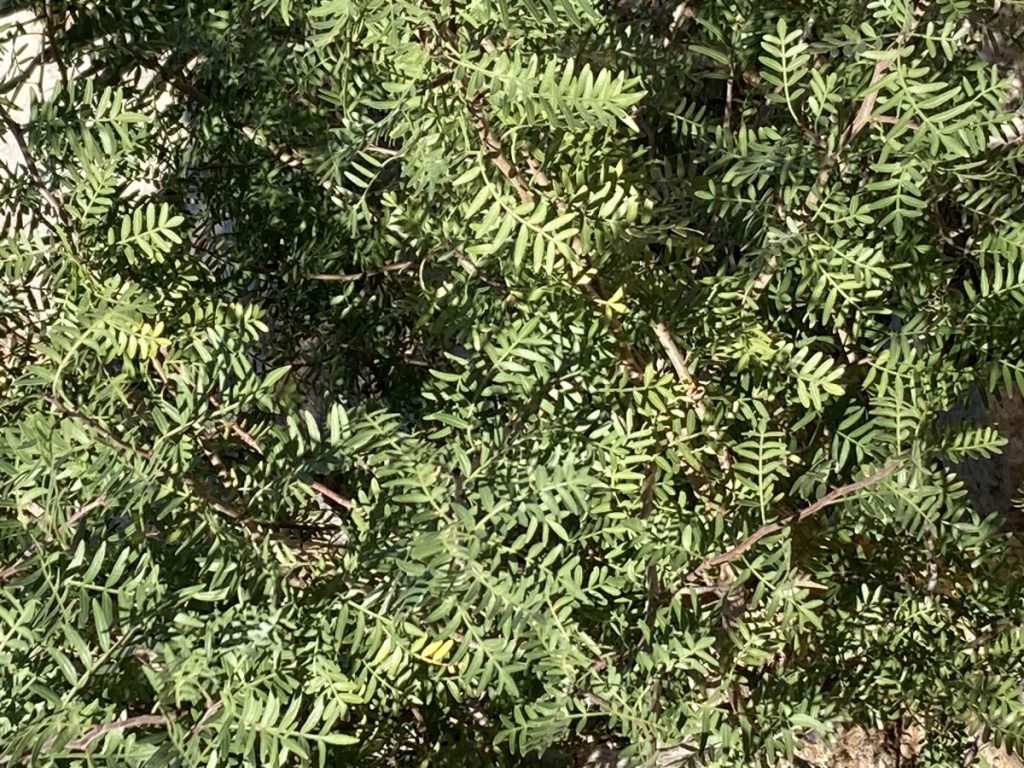
Although the colors of the desert are usually blue, gray or sage green, the Opuntia santa-rita is bright lavender when facing the sun. Relatively low to the ground, it contrasts beautifully in color and structure with the Totem Pole Cactus.
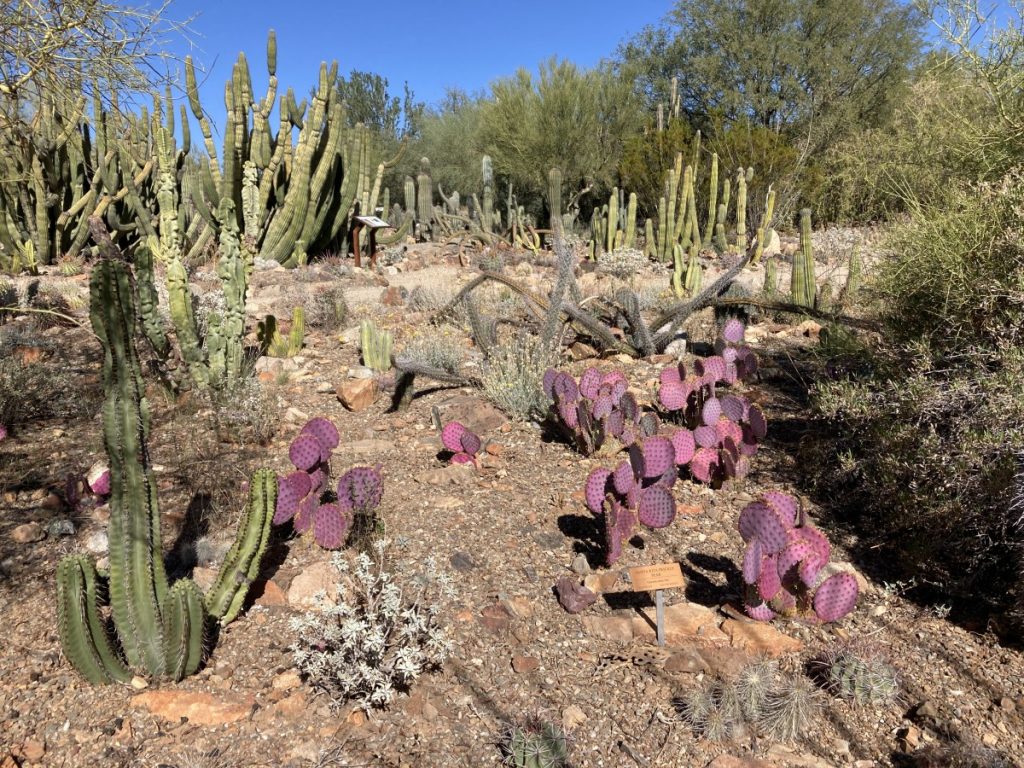
Opuntia santa-rita and Totem Pole Cactus
The saguaro is probably the signature plant of the Sonoran desert. Very long-lived, they usually need to be at least fifty years old before they have enough water stored to grow arms. Once they die, they are frequently left as architectural interest or taken down and used to create fences or roofs.
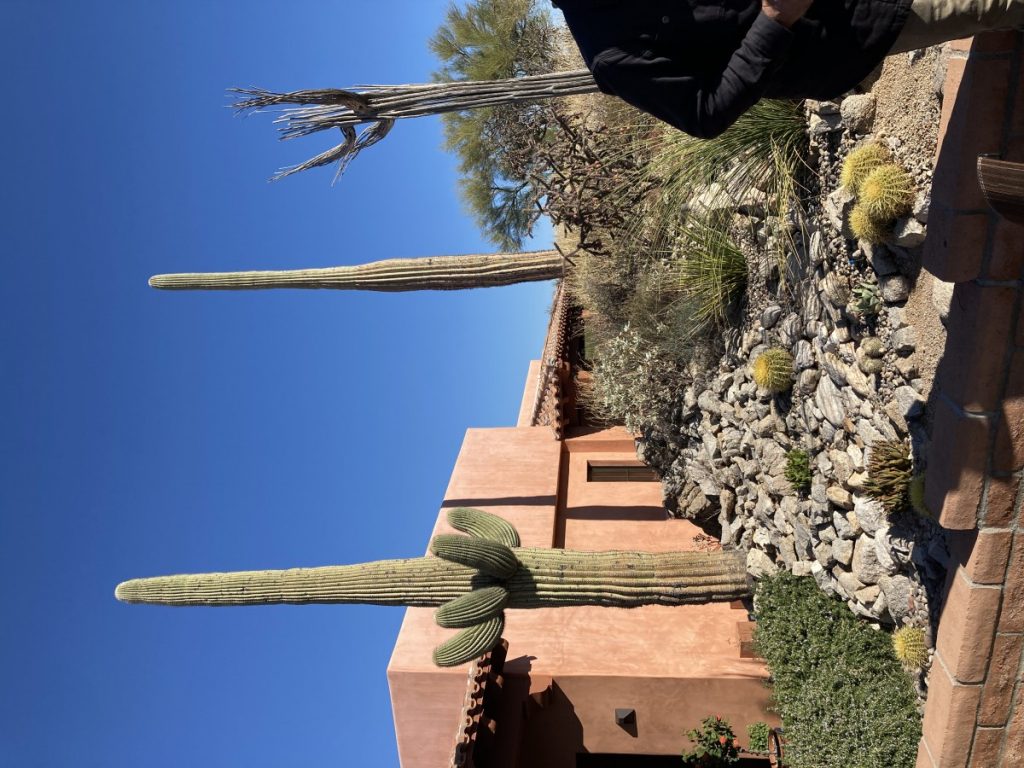
Ocotillo (Fourquieria spendens) is another signature plant of the Sonoran desert. Like Bursera, it has adapted to its environment by using the same dry/wet technique of defoliating and refoliating and blooming depending on the weather contitions. When in bloom, it is quite striking.
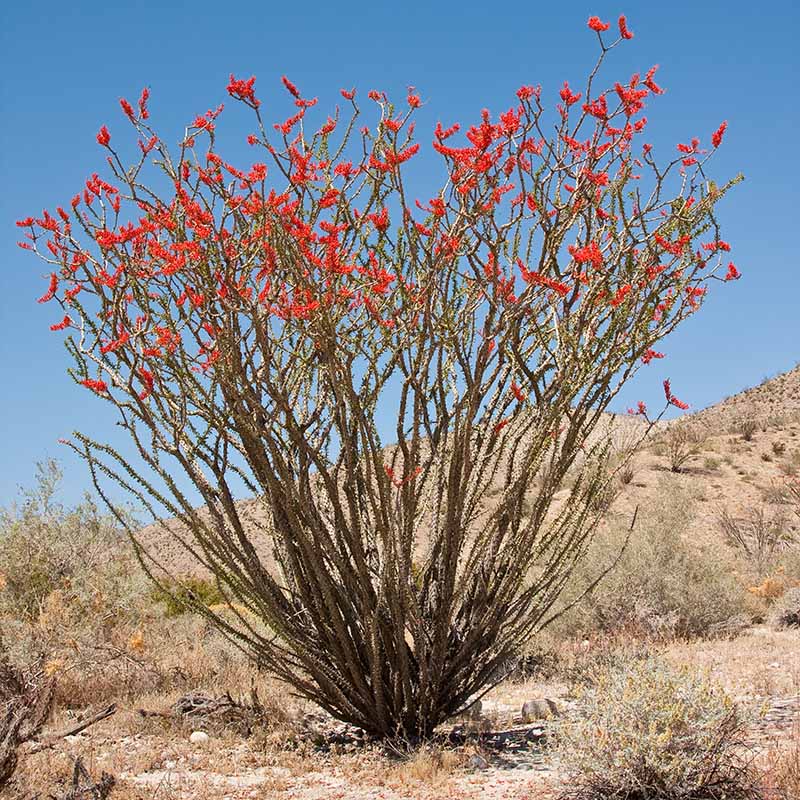
Ocotillo in bloom
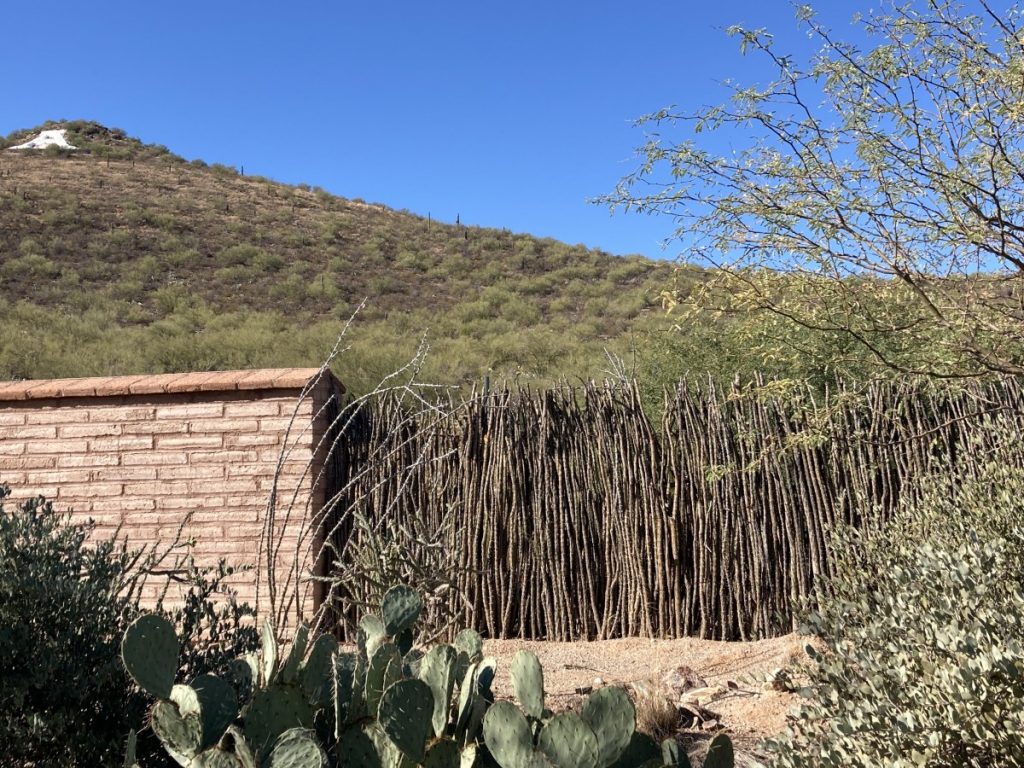
Ocotillo fence
The plant combination that I liked the best was some Teddy Bear Cactus (the white spines are entrancing but do not pet!) interspersed with an Ageratum-like flower. It has inspired me to plant some Ageratum ‘Blue Horizon’ next year beside my dwarf (only four feet tall but wider) Blue Spruce.
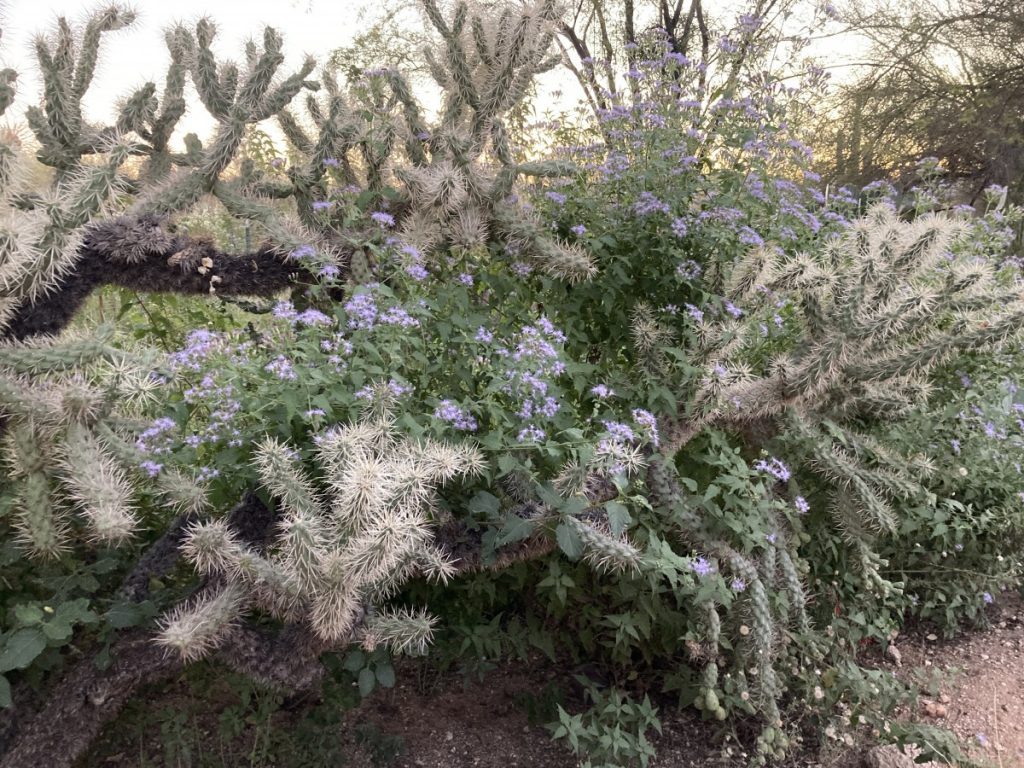
Teddy Bear Cactus and Ageratum-like flower.
Traveling is always fun. Even though climate and plants may be different than the ones we are used to, we can always be inspired and challenged to find substitutes for form and flowers.


0 Comments